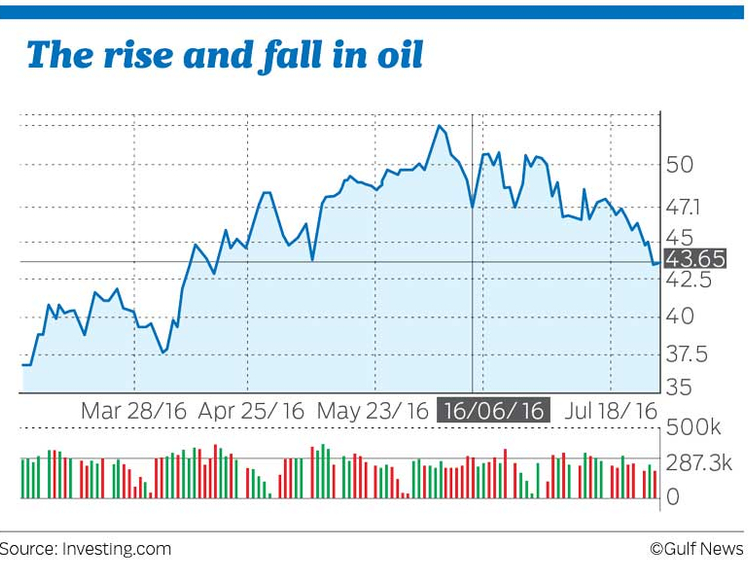Dubai: Oil may re-start its southwards journey soon.
Crude may hit sub-$40 (Dh147) per barrel as more supplies from US shale threaten the recent recovery even as stockpiles of refined products continue to rise.
On Friday, Brent crude traded at $42.17 per barrel, its lowest level in three months. Oil has slipped 18 percent since early June after almost doubling from a 12-year low in February. The global oversupply has eased amid supply disruptions from Nigeria to Canada, high inventories of both crude and refined fuels coupled with signs of faltering demand growth have stifled the recovery.
“Recent recovery in oil prices triggered a rise in production in US shale, and that was evident in the crude inventory data, so going ahead, we think there’s a possibility that crude may breach the levels of $40 soon,” Naeem, Aslam, chief market analyst with Think Forex told Gulf News from New York.
Morgan Stanley points out that one of key issues for crude is a severe oversupply of refined products from crude, including distillates and gasoline, while demand is waning. “Refined product glut and market share battle will weigh on crude oil. An overcorrection in crude oil demand from refiners is needed to clear product market overhangs,” Adam Longson, commodity strategist with Morgan Stanley said in a note.
Analysts don’t expect a recovery in global demand either.
“Given the oversupply in the refined product markets, fading refinery margins, and economic run cuts, we expect crude oil demand to deteriorate further over the coming months,” Longson said.
Rebalancing
Morgan Stanley, which sees crude to be at $36 per barrel in first quarter of 2018, expects more time for oil markets to re-balance even as they expect declines from non-Opec producers to remain muted.
“Markets will take longer to rebalance. they (equities team) show an oversupplied market well into 2017. Moreover, global supply ex. US is forecast to be higher from 2015-20. Declines in non-OPEC ex US supply should remain muted,” Longson said.
Morgan Stanley expects larger declines in Mexico, Brazil, China and Venezuela, with upside surprises from Russia and Canada.













